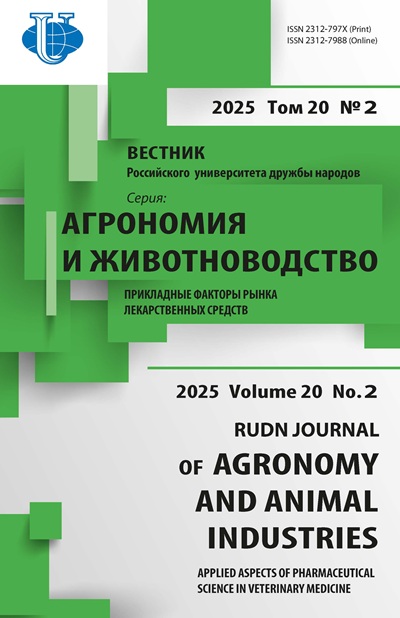Influence of an urban environment on pollution of soils by heavy metals depending on structure and age of wood forest stands (on an example of wood skilled giving Department of Ecology Russian State Agrarian University — MTAA named after K.A. Timiryazev
- Authors: Dovletyarova EA1, Mosina LV2, Stolyarova AG1
-
Affiliations:
- Peoples’ Friendship University of Russia
- Russian State Agrarian University — MTAA named after K. A. Timiryazev
- Issue: No S5 (2012)
- Pages: 92-98
- Section: Articles
- URL: https://agrojournal.rudn.ru/agronomy/article/view/1441
- ID: 1441
Cite item
Full Text
Abstract
The condition of wood plantings in forest-park ecosystems of megalopolises and performance of private sanitary and ecological functions by them substantially depends on intensity of influence of anthropogenic factors of the city. Intensity of these changes is corrected also by structure of tree species: it is established that for the centenary period (1909—2000) pollution of soils of LOD by heavy metals considerably increased: on lead — at 40—50 time, on copper at 17—24 time and to zinc — 4—9 times. Accumulation of heavy metals in the soil is closely connected with removal from a pollution source (city highways, the industrial enterprises), and also with a complex of properties of the soils caused by its consolidation at intensive recreational loading, and also from structure wood and shrubby plantings.
Keywords
About the authors
E A Dovletyarova
Peoples’ Friendship University of Russia
Email: elvira_2779@mail.ru
Department of landscape architecture and design
L V Mosina
Russian State Agrarian University — MTAA named after K. A. Timiryazev
Email: elvira_2779@mail.ru
Department of ecology
A G Stolyarova
Peoples’ Friendship University of Russia
Email: tuki-tuk@list.ru
Department of landscape architecture and design
References
Supplementary files















